History - FB
A new model of Biennial
In Florence, a city that boasts an ancient art tradition and has been regarded as the ‘cradle of the Renaissance’, the artistic events have always been frequent. But by the end of the 1990s something new happened: an International Biennial of Contemporary Art aimed at being a ‘showcase’ and also a space for dialogue between the artists themselves and a wide audience turned out to be an extraordinary event.
The Florence Biennale was founded by Pasquale and Piero Celona with a committee of artists, curators, and art critics. It was conceived as summoning of artists from around the world called to participate to the International Contemporary Art Exhibition in Florence. The founders proposed a model for a biennial in which emerging talents and established artists as well could show their works within a free and independent context. In 1997 the response to such a call was surprising: 317 artists from 20 countries came to show their works in the Medicean city.
Since that first edition the artists have become almost 6000 from more than 100 countries and all continents. Every two years, under the direction of Jacopo Celona since 2013, this biennial is still an international, independent, and multifaceted platform for contemporary art and design.
The Florence Biennale was founded by Pasquale and Piero Celona with a committee of artists, curators, and art critics. It was conceived as summoning of artists from around the world called to participate to the International Contemporary Art Exhibition in Florence. The founders proposed a model for a biennial in which emerging talents and established artists as well could show their works within a free and independent context. In 1997 the response to such a call was surprising: 317 artists from 20 countries came to show their works in the Medicean city.
Since that first edition the artists have become almost 6000 from more than 100 countries and all continents. Every two years, under the direction of Jacopo Celona since 2013, this biennial is still an international, independent, and multifaceted platform for contemporary art and design.
A showcase for contemporary art in the heart of Florence
Florence Biennale is the major contemporary art event in Florence (Italy), now in its XVth edition. The challenge of bringing contemporary art in the cradle of Renaissance is an occasion to create a prestigious exhibition moment for the international contemporary art production.
Since its foundation, the event enlivens the Medicean city every two years with a rich programme of side events such as conferences, displays, performances, workshops and lectures. Both artists and their audience have so many different opportunities for meet and comparison on various aspects of art and culture, with a particular focus on the theme of each edition of the biennial. The Florence Biennale is set up as a showcase for contemporary art and design: a free, independent and innovative ‘platform’.
The exhibition is realized with the support of the artists and proposed itself as a great innovative event fueled by creativity and individual initiative.
The Florence Biennale is distinguished from the prevailing model of events financed by the public or private. To differentiate it from the majority of the events of the field is moreover one of its main goals: put the artists in contact with the audience. A link between the Biennial and the artists it’s not essential, but the quality of the proposals is rewarded. Exhibitors are free to choose the works to be exhibited, with the support of the Curatorial Board. Leading the event is the founding principle of each edition: the Florence Biennale it’s not a fair but a cultural exhibition, an event that wants to be a valuable opportunity for artists to present their work to the audience and cultural operators.
Since its foundation, the event enlivens the Medicean city every two years with a rich programme of side events such as conferences, displays, performances, workshops and lectures. Both artists and their audience have so many different opportunities for meet and comparison on various aspects of art and culture, with a particular focus on the theme of each edition of the biennial. The Florence Biennale is set up as a showcase for contemporary art and design: a free, independent and innovative ‘platform’.
The exhibition is realized with the support of the artists and proposed itself as a great innovative event fueled by creativity and individual initiative.
The Florence Biennale is distinguished from the prevailing model of events financed by the public or private. To differentiate it from the majority of the events of the field is moreover one of its main goals: put the artists in contact with the audience. A link between the Biennial and the artists it’s not essential, but the quality of the proposals is rewarded. Exhibitors are free to choose the works to be exhibited, with the support of the Curatorial Board. Leading the event is the founding principle of each edition: the Florence Biennale it’s not a fair but a cultural exhibition, an event that wants to be a valuable opportunity for artists to present their work to the audience and cultural operators.
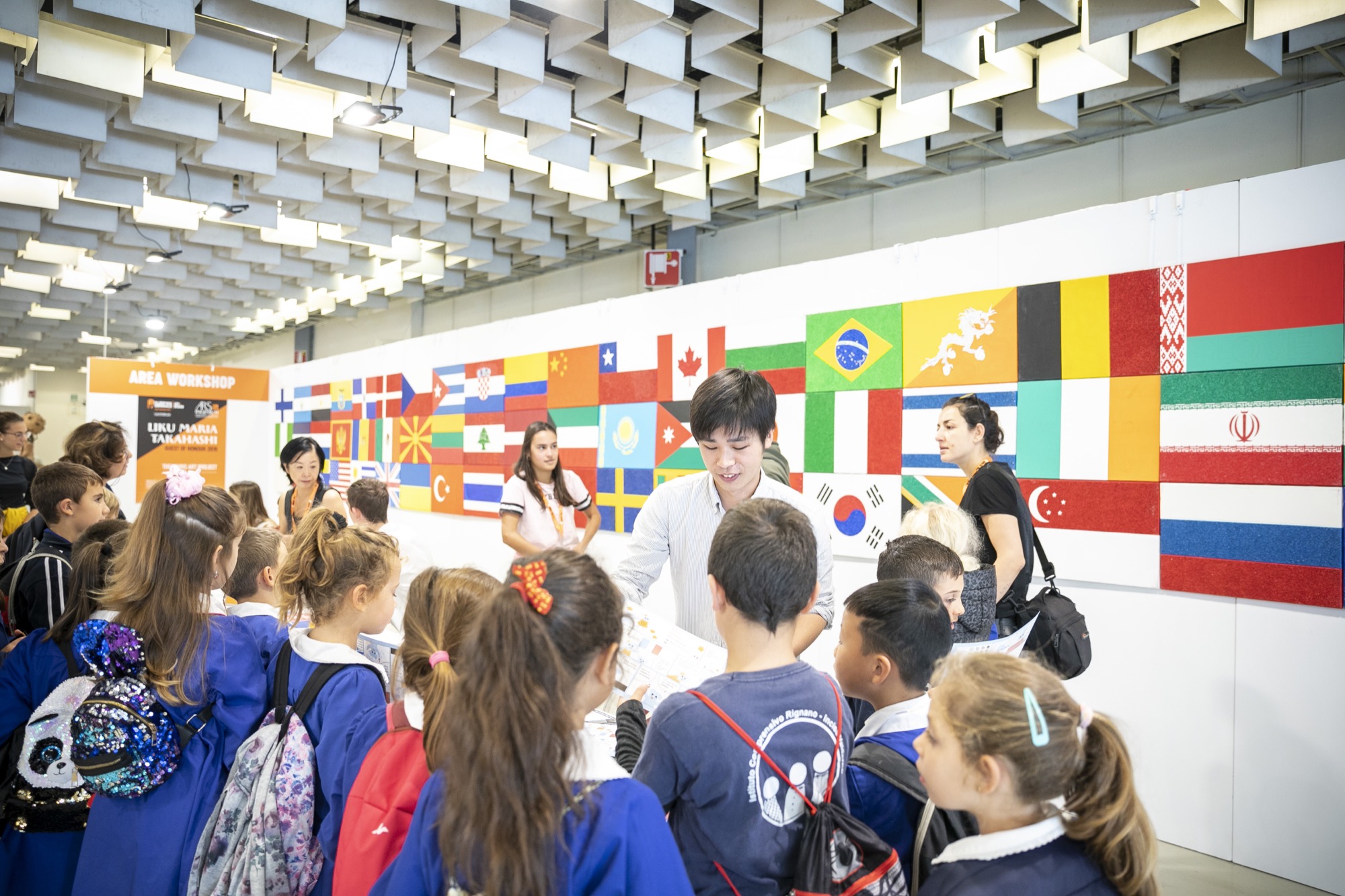
Dialogue and diversity as strengths of the event
Without the artists and designers attending the event, the event would not be possible: they are the the core of an important intercultural and interdisciplinary meeting. Dialogue between peoples through art and culture is in fact one of the inspiring principles of this event. The Florence Biennale promotes the value of respect for diversity since its foundation, considering them a great enrichment from the artistic point of view but also human. By the same token, the event also strongly defends the importance of art and the role of artists in civil society, looking to the past and present to build a sustainable future. Artists, exhibitors, collaborators and those who participate in this event are called to compare themselves and dialogue inspired by these principles.
Both for the participating exhibitors and the visitors, the event is a unique experience that has the power to unite artistic languages, countries, cultures and reflections on the world of art and design. All this takes place in the beautiful historical setting of Florence: one of the cities that have always been associated with the world of art and culture.
Both for the participating exhibitors and the visitors, the event is a unique experience that has the power to unite artistic languages, countries, cultures and reflections on the world of art and design. All this takes place in the beautiful historical setting of Florence: one of the cities that have always been associated with the world of art and culture.
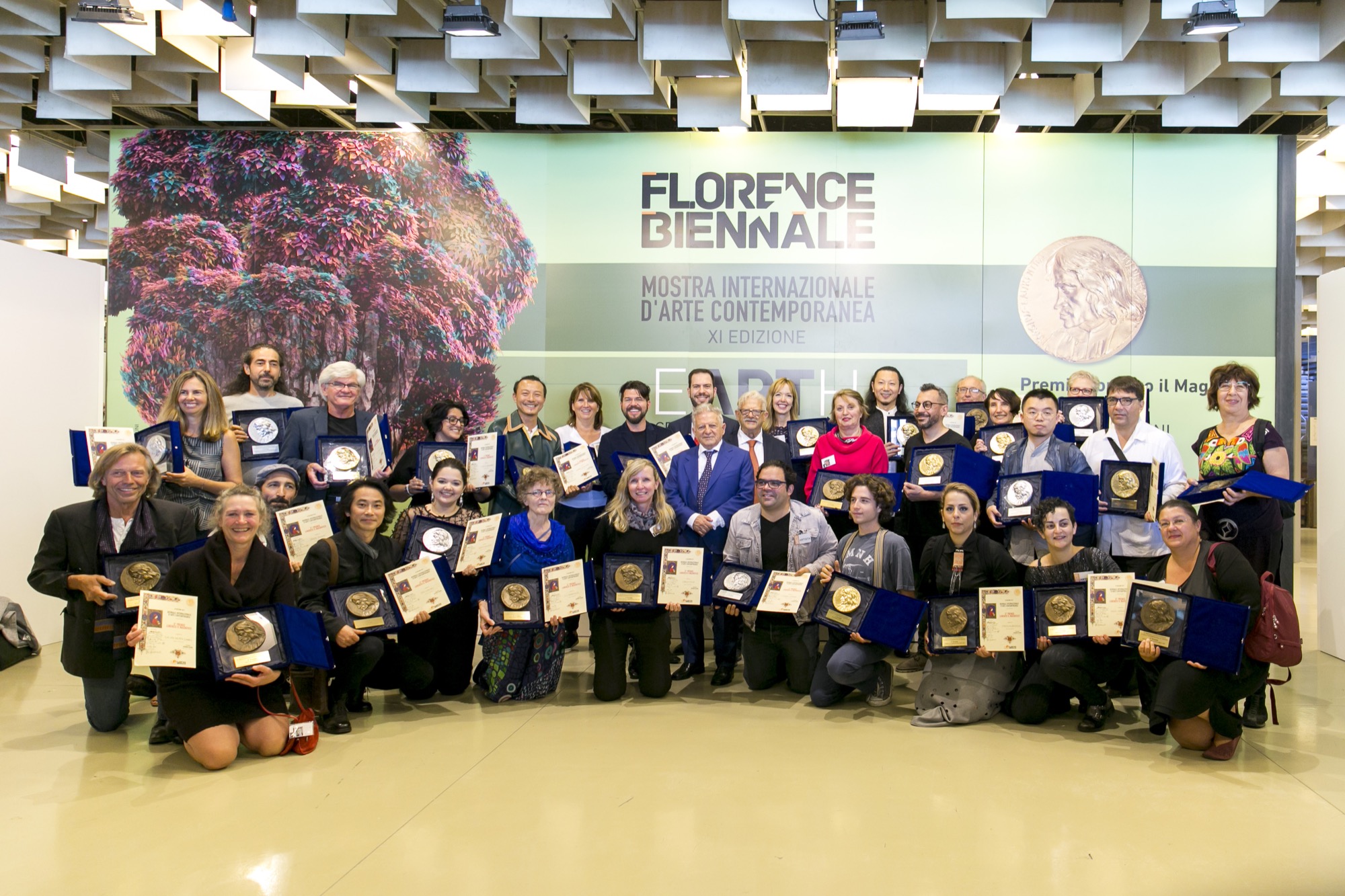
The categories and awards
The event welcomes the main forms of artistic expression during all the editions, thanks to the participation of thousands of artists from over 100 countries. During the 14th edition, the following categories have been exposed: Ceramic Art, Drawing Calligraphy and Printmaking, Installation Art, Jewellery Art, Mixed Media, New Media Art, Painting, Performance Art, Photography, Sculpture, Textile and Fiber Art and Video Art.
At the end of each edition of the Florence Biennale an International jury composed of distinguished scholars, art historians and critics from different countries confer the “Lorenzo il Magnifico” International Award to the best exhibiting artists for their works on show. Added to this, the “Lorenzo il Magnifico” Lifetime Achievement Award is conferred to individuals and institutions who have reached pinnacles of artistic achievement or stood out for their contribution to culture. The awards are dedicated to Lorenzo de' Medici, called "The Magnificent", to underline the Florentine nature of the event and to connect it ideally to its important artistic history in the emblematic figure of the great patron and promoter of the Renaissance Arts.
Amongst the award recipients of the past editions, mention should be made of Marina Abramović (2009), Gustavo Aceves (2019), Refik Anadol (2019), Sauro Cavallini (in memoriam, 2017), David Hockey (2003), Christo and Jeanne-Claude (2005), Ferrari & Pininfarina (2003), Gilbert & George (2007), Arata Isozaki (2017), Anish Kapoor (2013), Michelangelo Pistoletto (2021), Oliviero Toscani (2021), Franco Zeffirelli (2019) and David LaChapelle (2023).
At the end of each edition of the Florence Biennale an International jury composed of distinguished scholars, art historians and critics from different countries confer the “Lorenzo il Magnifico” International Award to the best exhibiting artists for their works on show. Added to this, the “Lorenzo il Magnifico” Lifetime Achievement Award is conferred to individuals and institutions who have reached pinnacles of artistic achievement or stood out for their contribution to culture. The awards are dedicated to Lorenzo de' Medici, called "The Magnificent", to underline the Florentine nature of the event and to connect it ideally to its important artistic history in the emblematic figure of the great patron and promoter of the Renaissance Arts.
Amongst the award recipients of the past editions, mention should be made of Marina Abramović (2009), Gustavo Aceves (2019), Refik Anadol (2019), Sauro Cavallini (in memoriam, 2017), David Hockey (2003), Christo and Jeanne-Claude (2005), Ferrari & Pininfarina (2003), Gilbert & George (2007), Arata Isozaki (2017), Anish Kapoor (2013), Michelangelo Pistoletto (2021), Oliviero Toscani (2021), Franco Zeffirelli (2019) and David LaChapelle (2023).
XII Florence Biennale
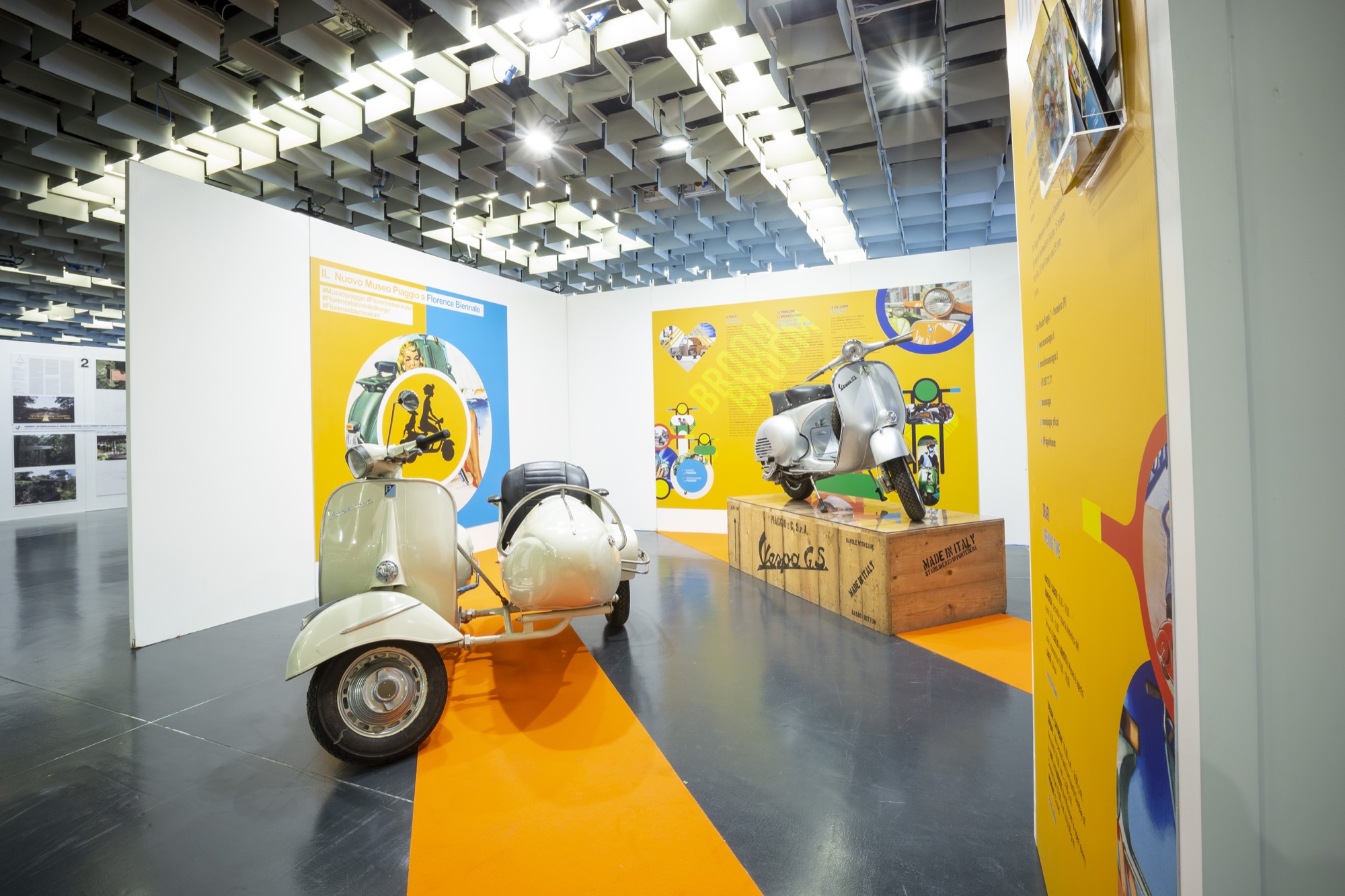
The introduction of the Design section
With the 2019 edition the Florence Biennale introduced a new exhibition section dedicated to the world of design. This innovation took on a particularly significant value in the year in which the 500th anniversary of the death of Leonardo Da Vinci was celebrated. His genius has always been associated with technical-scientific design, as well as artistic. The great heterogeneity of his thought and work have united the values of culture, and is the ideal reference model around which the organization of the Design area is structured. The connection between creative and production processes plays a very important role among the topics covered within this section.
This introduction of a further exhibition section within the event wants to represent a tribute to the local tradition. Tuscany is a basin of knowledge and case studies of absolute importance in the production of high-end design, as a result of technical knowledge and social and cultural values spread in the territories. Historical manufacturing knowledge today as in the past, develop high-end artifacts for national and international brands.
In the industrial production of the Tuscan districts, we can fully rediscover that ingenuity and explorative spirit of Leonardo’s work. The awards of the design section are entitled to this great personality: the “Leonardo Da Vinci” International Award is awarded by an International Jury composed of eminent personalities of the sector to the best exhibitor designers in the following categories: Architecture & Town Design, Industrial & Product Design, Interior Design, Fashion & Jewellery Design, Communication & Graphic Design, Technology & Game Design. As for the art section, a Lifetime Achievement Award is also provided, named after Leonardo da Vinci: it’s conferred to single designers and/or associations who have distinguished themselves with their works giving an important contribution to creativity and innovation. At the end of the 2019 edition, the Career Award winners for the Design section were Salvatore and Wanda Ferragamo, Elsa Peretti (Tiffany & Co.) and Paula Scher, at the end of the 2021 edition was Vivienne Westwood and in 2023 Santiago Calatrava.
This introduction of a further exhibition section within the event wants to represent a tribute to the local tradition. Tuscany is a basin of knowledge and case studies of absolute importance in the production of high-end design, as a result of technical knowledge and social and cultural values spread in the territories. Historical manufacturing knowledge today as in the past, develop high-end artifacts for national and international brands.
In the industrial production of the Tuscan districts, we can fully rediscover that ingenuity and explorative spirit of Leonardo’s work. The awards of the design section are entitled to this great personality: the “Leonardo Da Vinci” International Award is awarded by an International Jury composed of eminent personalities of the sector to the best exhibitor designers in the following categories: Architecture & Town Design, Industrial & Product Design, Interior Design, Fashion & Jewellery Design, Communication & Graphic Design, Technology & Game Design. As for the art section, a Lifetime Achievement Award is also provided, named after Leonardo da Vinci: it’s conferred to single designers and/or associations who have distinguished themselves with their works giving an important contribution to creativity and innovation. At the end of the 2019 edition, the Career Award winners for the Design section were Salvatore and Wanda Ferragamo, Elsa Peretti (Tiffany & Co.) and Paula Scher, at the end of the 2021 edition was Vivienne Westwood and in 2023 Santiago Calatrava.
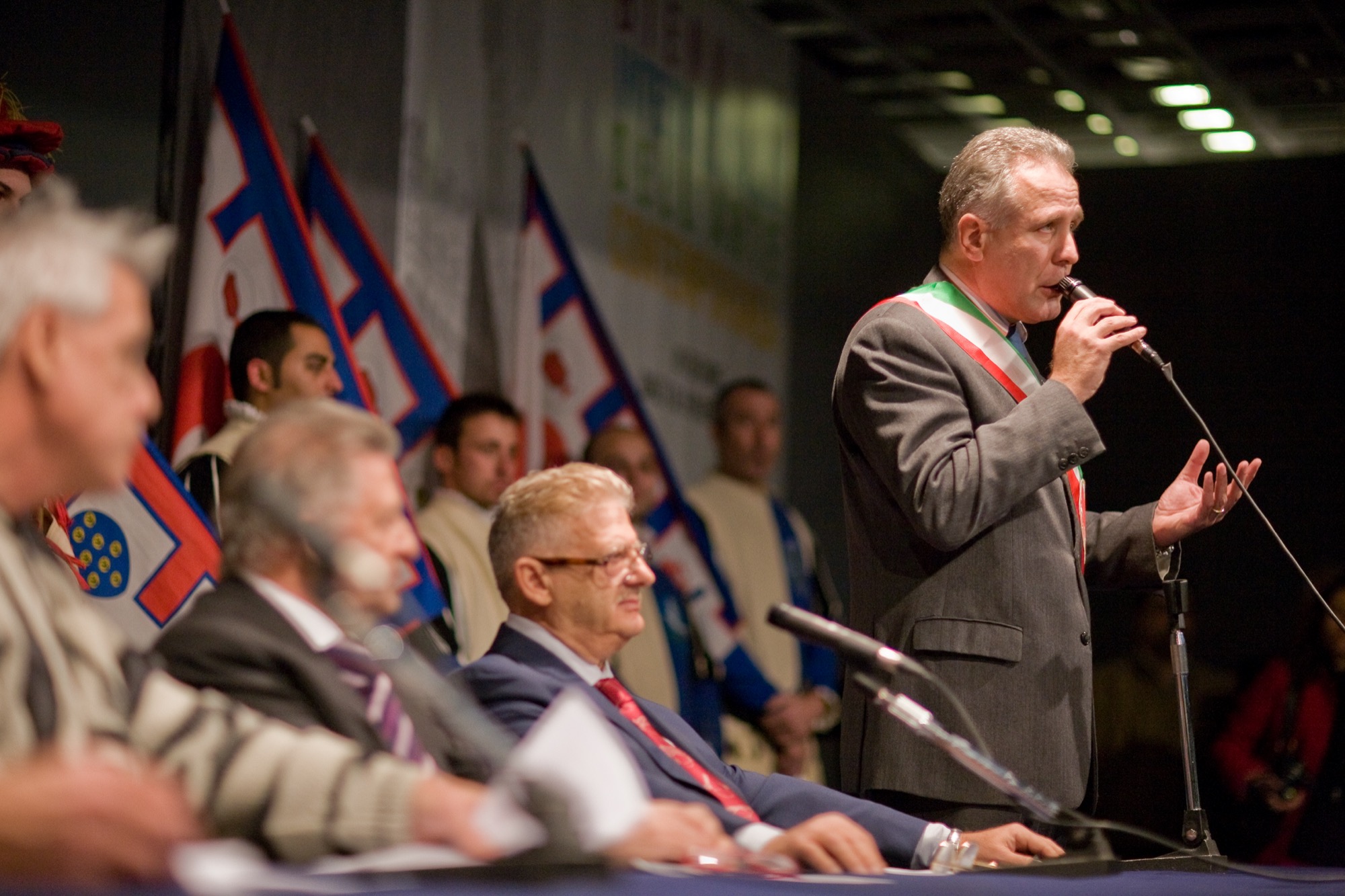
Patronages and acknowledgements
The event is held with the patronage of national and international public institutions, like the European Parliament, Ministry of Culture, Tuscany Region and the Municipality of Florence. Included in the UN program “Dialogue among Civilisations” in 2001, in 2007 the Florence Biennale received an award from the Society of Artists for Human Rights founded by Anne Archer, who gave that prize to Pasquale Celona, an artist himself, for his commitment to advancing respect for human rights through the languages of art.
In 2013 the Florence Biennale has received the patronage of the UNESCO Center of Florence, presided over by Maria Luisa, for the promulgation of the Ethical Charter of the New Millennium Artist. In 2015 the Florence Biennale was awarded with the ‘Pegaso d’Argento’ by then-President of the Regional Council of Tuscany Eugenio Giani, for the excellence in promoting contemporary art at an international level.
In 2017, in 2019 and in 2021 the event has received the patronage of the UNESCO Italian National Committee. Also in 2019, the Director Jacopo Celona is conferred by the City of Florence the recognition of Ambassador of the City of Florence, as a leading interlocutor with an active role in the development of the city who can count on the collaboration and support of local institutions and operators.
In 2013 the Florence Biennale has received the patronage of the UNESCO Center of Florence, presided over by Maria Luisa, for the promulgation of the Ethical Charter of the New Millennium Artist. In 2015 the Florence Biennale was awarded with the ‘Pegaso d’Argento’ by then-President of the Regional Council of Tuscany Eugenio Giani, for the excellence in promoting contemporary art at an international level.
In 2017, in 2019 and in 2021 the event has received the patronage of the UNESCO Italian National Committee. Also in 2019, the Director Jacopo Celona is conferred by the City of Florence the recognition of Ambassador of the City of Florence, as a leading interlocutor with an active role in the development of the city who can count on the collaboration and support of local institutions and operators.
The catalogue
The official catalogue of the Florence Biennale in the 2019 edition has been enriched with a volume dedicated to the new section Design. The catalogue tells about the event through an introductory part dedicated to the current edition, guests of honour and special projects, detailing the program of the event, and continues with a page for each exhibitor participant.
Published for the 2021 edition by Giorgio Mondadori Editore, the catalogue was distributed free of charge to all participating artists and designers, the press, guests and invited authorities.
The volume was distributed in Italy through Messaggerie Libri, Amazon.it, and the most important book fairs (such as those held in Bologna, Turin, Rome, and Frankfurt). Copies of the volume was also sent to Italian libraries in London, Paris, Berlin, Madrid and other European cities. Furthermore, the FB Catalogue was available at the bookshops of the Venice Biennale, Triennale di Milano, and Artefiera Bologna as well as in the museums of Padua, Bologna, Florence, Rome, and Verona.
Published for the 2021 edition by Giorgio Mondadori Editore, the catalogue was distributed free of charge to all participating artists and designers, the press, guests and invited authorities.
The volume was distributed in Italy through Messaggerie Libri, Amazon.it, and the most important book fairs (such as those held in Bologna, Turin, Rome, and Frankfurt). Copies of the volume was also sent to Italian libraries in London, Paris, Berlin, Madrid and other European cities. Furthermore, the FB Catalogue was available at the bookshops of the Venice Biennale, Triennale di Milano, and Artefiera Bologna as well as in the museums of Padua, Bologna, Florence, Rome, and Verona.
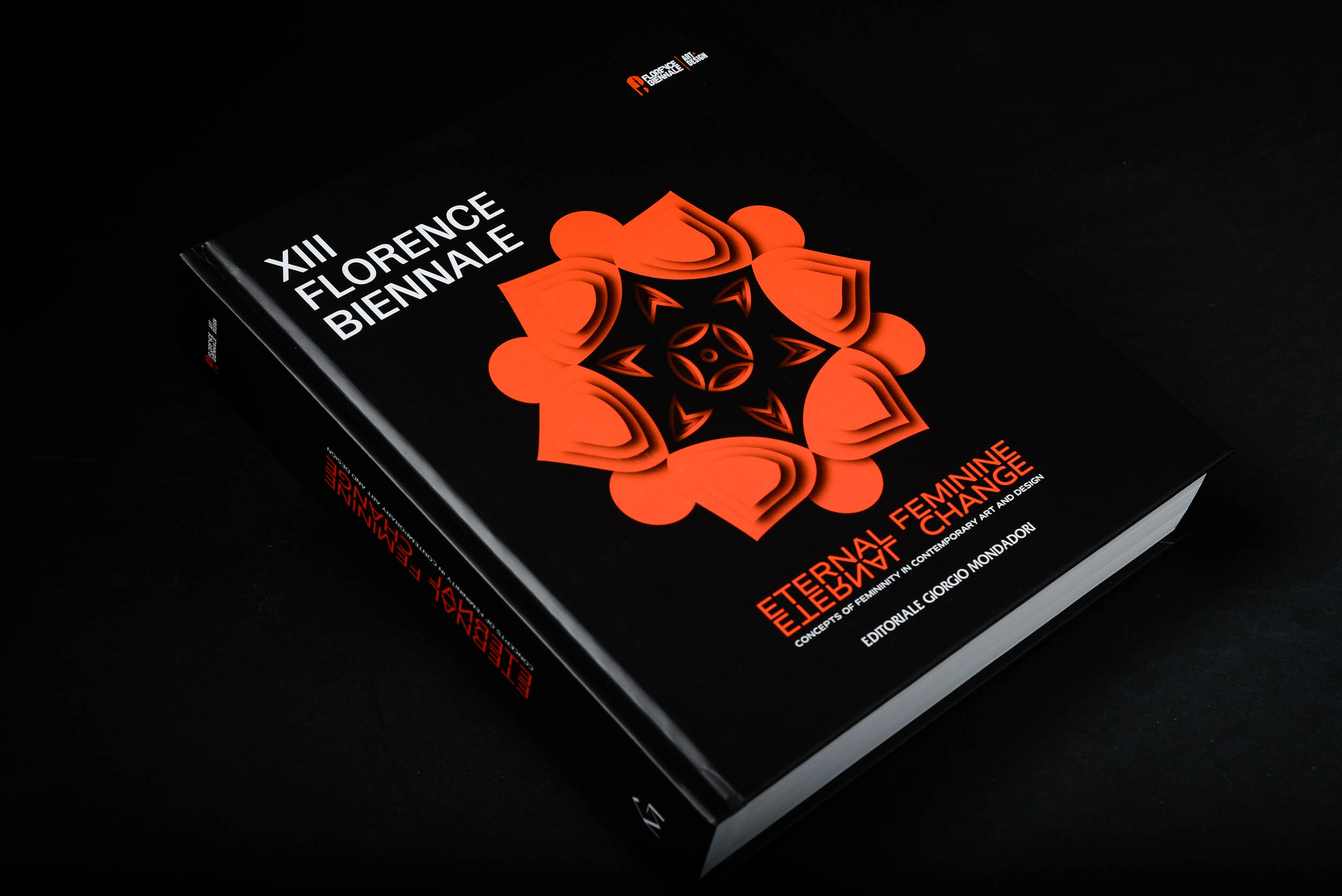
Exhibition Venue
The Fortezza da Basso, a Renaissance masterpiece of military architecture, that since 1967 is the main center for exhibitions in Florence, strategically located in the historical center within walking distance of the Santa Maria Novella station. The Fortezza is the ideal venue for events of high artistic value, its evocative charm recalls the splendor of the Medici governance.
A unique location in the world, combining perfectly restored historic locations with modern pavilions such as the Spadolini and Cavaniglia Pavilions. The Florence Biennale takes place in over 11,000 square metres of exhibition space, to which are added outdoor spaces dedicated to special projects and side events. Artists and visitors thus have the opportunity to experience the atmosphere of a great international event of creative people coming to Florence from over 71 countries and all continents.
A unique location in the world, combining perfectly restored historic locations with modern pavilions such as the Spadolini and Cavaniglia Pavilions. The Florence Biennale takes place in over 11,000 square metres of exhibition space, to which are added outdoor spaces dedicated to special projects and side events. Artists and visitors thus have the opportunity to experience the atmosphere of a great international event of creative people coming to Florence from over 71 countries and all continents.
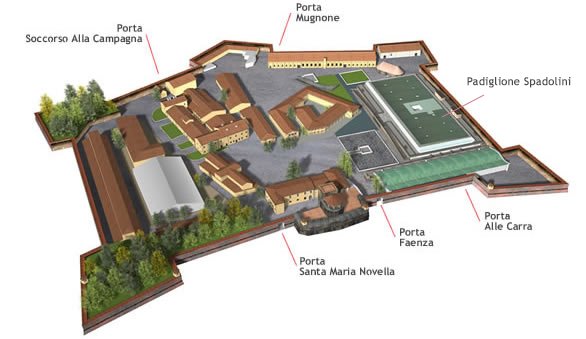
Spadolini Pavilion
The Spadolini Pavilion, built between 1974 and 1976 and planned by Florentine architect Pierluigi Spadolini, is the main building to organise fairs & congresses in Florence, and a multifunctional area thanks to its large and free surfaces, located inside one of the most important monumental areas of the city.
Area: 8.320 Mq
Area: 8.320 Mq
Cavaniglia Pavilion
The Cavaniglia Pavilion is a modern multi-purpose structure where Renaissance and contemporary architecture meet in a timeless dialogue. The pavilion is located near Porta Faenza and encompasses a long section of the Fortezza da Basso's surrounding walls, a mighty setting of exposed stone, while the roof draws a large wave over the entire building.
Area: 3.300 Mq
Area: 3.300 Mq
Fortezza da Basso – Historical Background
Originally known as Castello Alessandria, it was built by Pier Francesco da Viterbo and Antonio da Sangallo the Younger between 1534 and 1537 for Alessandro de’ Medici, who had been appointed Governor of Florence by his uncle Giulio de’ Medici, Pope Clement VII. The works began in May 1533 under the supervision of famed warlord Alessandro Vitelli and architect Pier Francesco Florenzuoli da Viterbo.
The first stone was laid on July 15, 1534, and most fortification works were completed by December.
The giant, pentagonal fortress was built quickly and with enormous expenditures of resources in order to secure the Medici’s control on the city following their recent return after the Siege of Florence, and to provide lodging for a massive contingent of troops, as well as a refuge for the governors in the event of an upheaval, but also to impress and intimidate the Florentine population with its size.
To emphasize this effect, the side that faces the city was given a monumental aspect by Antonio da Sangallo. The fortress maintained its military function under the Lorraine dukes, when other buildings of architectural and environmental interest were erected, such as the officers’ apartment house and a small theater.
As many other similar constructions, the Fortress remained unused and was entrusted to the military administration until 1967.
The first stone was laid on July 15, 1534, and most fortification works were completed by December.
The giant, pentagonal fortress was built quickly and with enormous expenditures of resources in order to secure the Medici’s control on the city following their recent return after the Siege of Florence, and to provide lodging for a massive contingent of troops, as well as a refuge for the governors in the event of an upheaval, but also to impress and intimidate the Florentine population with its size.
To emphasize this effect, the side that faces the city was given a monumental aspect by Antonio da Sangallo. The fortress maintained its military function under the Lorraine dukes, when other buildings of architectural and environmental interest were erected, such as the officers’ apartment house and a small theater.
As many other similar constructions, the Fortress remained unused and was entrusted to the military administration until 1967.
